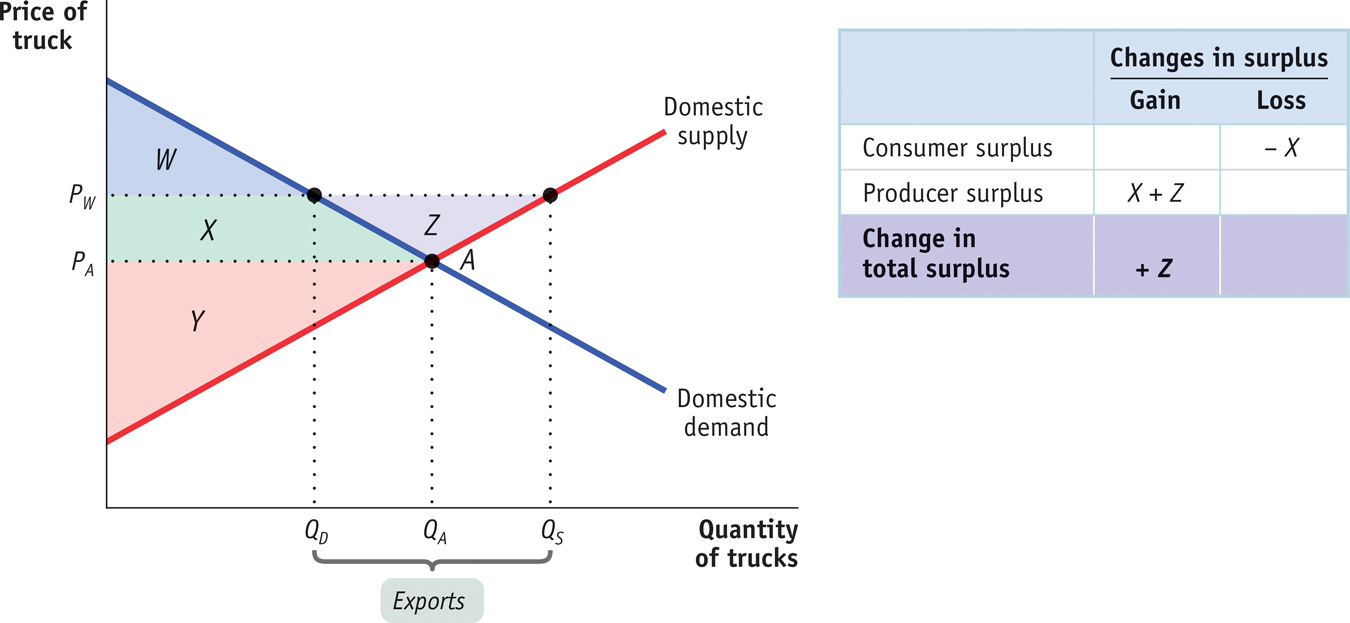The Effects of Exports
Figure 5-8 shows the effects on a country when it exports a good, in this case trucks. For this example, we assume that unlimited quantities of trucks can be sold abroad at a given world price, PW, which is higher than the price that would prevail in the domestic market in autarky, PA.

The higher world price makes it profitable for exporters to buy trucks domestically and sell them overseas. The purchases of domestic trucks drive the domestic price up until it is equal to the world price. As a result, the quantity demanded by domestic consumers falls from QA to QD and the quantity supplied by domestic producers rises from QA to QS. This difference between domestic production and domestic consumption, QS − QD, is exported.
Like imports, exports lead to an overall gain in total surplus for the exporting country but also create losers as well as winners. Figure 5-9 shows the effects of truck exports on producer and consumer surplus. In the absence of trade, the price of each truck would be PA. Consumer surplus in the absence of trade is the sum of areas W and X, and producer surplus is area Y. As a result of trade, price rises from PA to PW, consumer surplus falls to W, and producer surplus rises to Y + X + Z. So producers gain X + Z, consumers lose X, and, as shown in the table accompanying the figure, the economy as a whole gains total surplus in the amount of Z.

We have learned, then, that imports of a particular good hurt domestic producers of that good but help domestic consumers, whereas exports of a particular good hurt domestic consumers of that good but help domestic producers. In each case, the gains are larger than the losses.